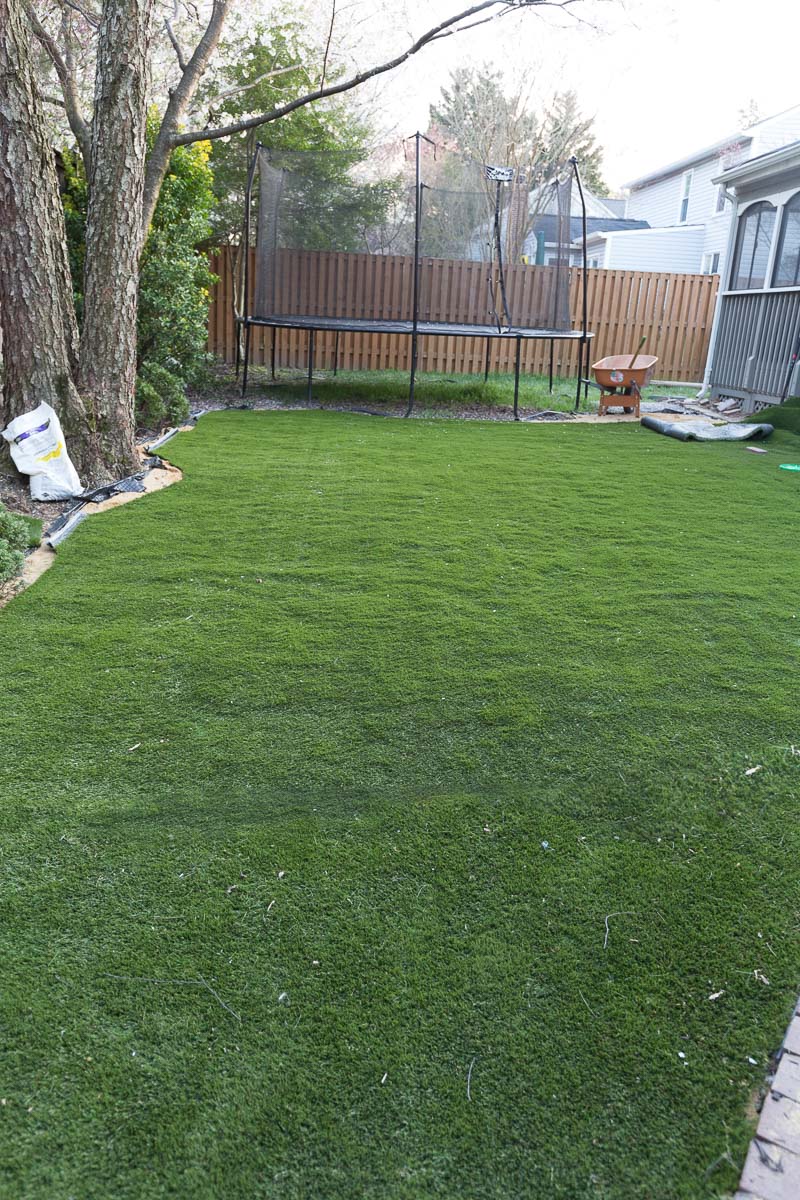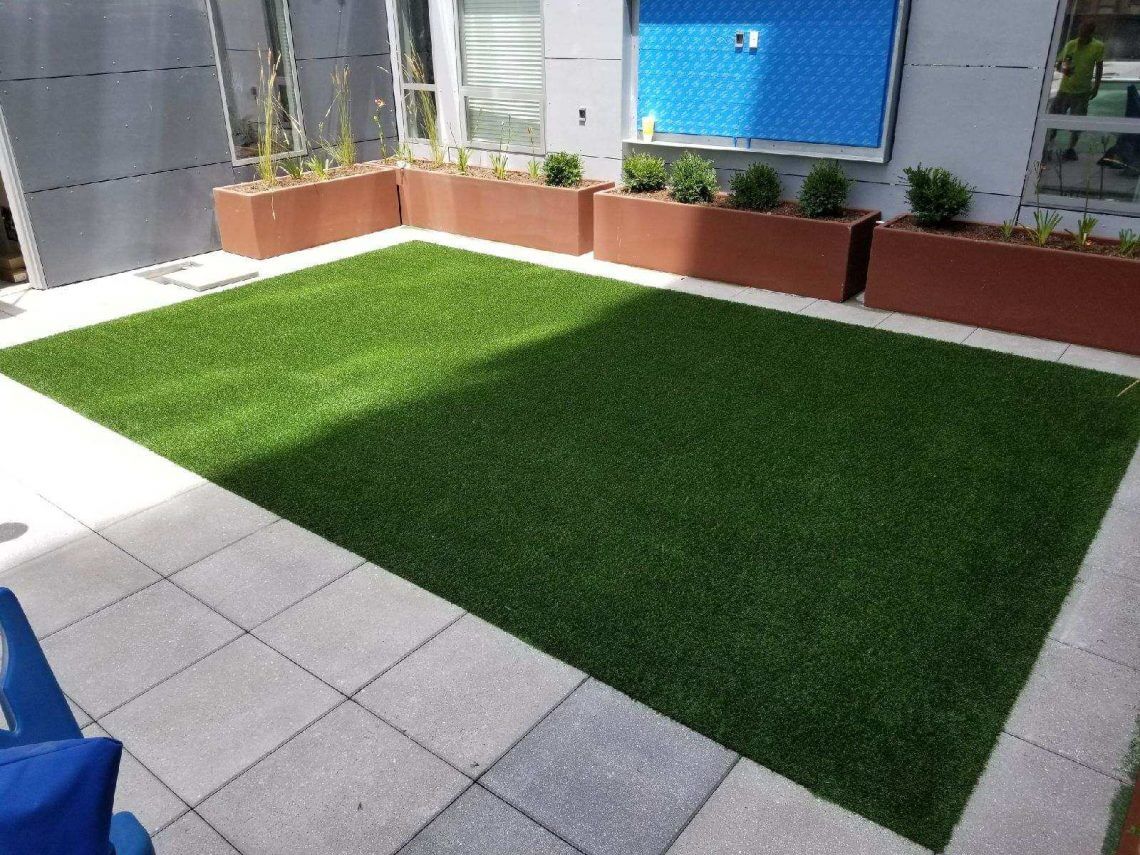Leading Factors to Consider Artificial Grass for a Lush and Low-Maintenance Lawn
As house owners significantly look for lasting remedies for exterior rooms, fabricated lawn provides an attractive alternative to standard lawns. Its capacity to keep a vivid appearance year-round without the problems of watering, mowing, or chemical treatments makes it a sensible option for those aiming to decrease maintenance efforts. Additionally, the environmental advantages, consisting of considerable water conservation and lowered reliance on pesticides, align with modern eco-friendly values. Nonetheless, the benefits expand beyond mere aesthetic appeals and sustainability; checking out the complex implications of fabricated lawn discloses a comprehensive technique to lawn monitoring that benefits deeper consideration.
Year-Round Greenery
Among the most considerable advantages of man-made grass is its capability to provide year-round plant, despite climate problems. Property owners commonly face challenges in maintaining a vibrant lawn as a result of seasonal adjustments, dry spells, or heavy rains. Artificial lawn gets rid of these issues, making sure a consistently lavish look throughout the year.
This artificial option is crafted to stand up to varied weather condition scenarios, from sweltering summer heat to freezing winter months temperature levels. Unlike all-natural lawn, which might brownish or come to be irregular throughout severe problems, man-made turf maintains its lively shade and appearance, enhancing the aesthetic allure of any type of landscape.
Furthermore, fabricated yard is immune to parasites and illness that usually impact natural yards. This strength adds to its long-lasting charm, as there is no need for chemical treatments or plant foods that can be harmful to the setting. House owners can delight in the aesthetic advantages of a well-maintained yard without the intermittent obstacles postured by all-natural turf treatment.
Minimized Upkeep Efforts
Man-made grass substantially lowers upkeep efforts, permitting homeowners to delight in an excellent grass without the time-consuming tasks connected with all-natural grass treatment. Among one of the most remarkable advantages of synthetic grass is the removal of routine mowing. Without demand for a lawnmower, home owners save both time and the price of maintenance connected with this equipment.

Cleaning artificial yard is straightforward; a simple rinse with a tube or the periodic brushing to remove debris is usually sufficient - backyard artificial grass. This convenience of care allows property owners to invest more time appreciating their outdoor areas instead than laboring over them. In recap, the lowered maintenance initiatives associated with fabricated turf make it an attractive option for those looking for a lovely, easy yard
Water Preservation Perks
The substantial reduction in upkeep efforts connected with fabricated yard reaches water conservation, making it an eco-friendly alternative for home owners. Standard lawns require considerable quantities of water to stay lively and lavish, often bring about too much water use, particularly in dry regions. On the other hand, synthetic lawn gets rid of the requirement for normal watering, significantly reducing the overall water consumption in your lawn.
By opting for synthetic turf, property owners can preserve countless gallons of water each year. This change not just advantages individual families yet likewise contributes to broader ecological initiatives focused on minimizing water waste. In areas experiencing water deficiency, the fostering of artificial turf can play a considerable function in reducing the impacts of drought and making certain that valuable water sources are made use of extra successfully.
Furthermore, the setup of synthetic lawn can assist reduced metropolitan water need, benefiting the area in its entirety. With expanding understanding of environmental problems, choosing synthetic lawn serves as a proactive action in the direction of sustainable landscaping, aiding to protect all-natural water resources while preserving a visually pleasing exterior space (artificial grass). In summary, synthetic yard offers an engaging option for water conservation, aligning environmental obligation with modern-day landscaping requirements

Pest and Allergic Reaction Decrease
A substantial benefit of mounting synthetic turf is its capacity to decrease pests and irritants in outdoor spaces. Conventional yard lawns often work as reproducing grounds for pests such as mosquitoes, ticks, and ants, which can produce pain and wellness threats for family members and animals. On the other hand, fabricated lawn removes the natural material that brings in these insects, thus significantly decreasing their populaces in your backyard.
Additionally, all-natural turf can harbor mold and mildew, pollen, and various other allergens, which can trigger allergic reactions and breathing problems for sensitive individuals. Synthetic lawn offers a cleaner environment, minimizing the possibility for allergenic responses. Unlike all-natural grass, fabricated grass does not generate pollen, making it a superb choice for allergic reaction patients seeking to appreciate their exterior areas without the threat of flare-ups.
Furthermore, the absence of dirt in synthetic grass suggests there is much less dirt and dirt, further reducing airborne allergens. This low-maintenance choice not only enhances the aesthetic appeal of your lawn but additionally advertises a much healthier outside setting, permitting households to appreciate their why not check here grass without the consistent worry of this contact form irritants and pests. Therefore, synthetic yard is a calculated option for those focusing on convenience and health in their outside home.
Long-Term Price Savings
Spending in artificial turf can cause substantial lasting cost savings for property owners. While the initial investment might appear significant, the monetary advantages gradually can be significant. Artificial yard removes the demand for normal yard maintenance expenditures, such as mowing, feeding, and watering. Traditional yards usually require significant sources to preserve a lush look, especially in locations susceptible to dry spell or extreme climate condition.
Moreover, the long life of artificial lawn further boosts its cost-effectiveness. A lot of high-grade fabricated grass items can last 15 to 25 years with minimal maintenance, lowering the need for substitute or comprehensive repairs. On the other hand, natural turf may need constant reseeding and routine treatment, which can quickly build up in prices.
Energy financial savings are an additional vital variable. Property owners can expect to see reduced water costs, as artificial grass does not need watering. Additionally, the reduction in grass treatment services can liberate valuable time and sources, allowing house owners to allocate their budgets elsewhere.
Verdict
In summary, artificial turf presents countless advantages for house owners looking for a lively and low-maintenance official source landscape. Inevitably, the long-lasting price savings associated with fabricated grass solidify its standing as a lasting and functional solution for boosting outdoor spaces.
Artificial yard substantially decreases upkeep efforts, permitting house owners to take pleasure in an excellent grass without the time-consuming tasks connected with natural turf treatment.The substantial decrease in maintenance efforts connected with fabricated yard expands to water conservation, making it an environmentally friendly choice for homeowners. In contrast, fabricated yard gets rid of the demand for normal watering, dramatically reducing the total water usage in your backyard.
In areas experiencing water deficiency, the fostering of man-made turf can play a substantial role in mitigating the impacts of drought and making sure that beneficial water resources are utilized a lot more effectively.
With expanding awareness of ecological concerns, selecting fabricated lawn serves as an aggressive action in the direction of lasting landscaping, aiding to maintain all-natural water sources while maintaining a visually pleasing outside space.